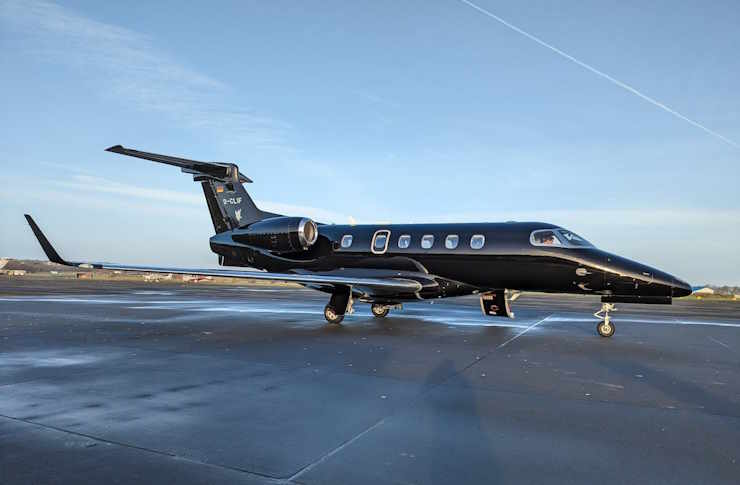2026 Ford Vehicles: Major Upgrades, New Features, and What Buyers Need to Know
Ford is preparing to roll out its 2026 lineup with significant updates across multiple vehicle categories. From redesigned SUVs to enhanced technology packages and improved powertrains, the upcoming model year promises meaningful changes for prospective buyers. Understanding these updates can help consumers make informed decisions about their next vehicle purchase.

The automotive landscape continues to evolve rapidly, and Ford is positioning its 2026 lineup to meet changing consumer expectations. As buyers increasingly prioritize fuel efficiency, advanced safety features, and connectivity, Ford has responded with substantial updates across its vehicle range. These changes reflect both market demands and regulatory requirements while maintaining the brand’s commitment to performance and capability.
What New Ford Models Are Coming in 2026?
Ford’s 2026 lineup includes refreshed versions of popular vehicles alongside potential new entries. The Mustang continues its evolution with enhanced performance options and updated styling cues. The F-150, America’s best-selling truck, receives technology upgrades and potential hybrid powertrain expansions. Meanwhile, the Maverick compact pickup is expected to see refinements based on customer feedback from earlier model years. Ford is also likely to introduce updates to its commercial vehicle lineup, addressing the needs of fleet operators and business owners who depend on reliable work vehicles.
How Are Ford SUVs Changing for 2026?
Ford SUVs represent a significant portion of the brand’s sales, and the 2026 models reflect this importance. The Explorer is anticipated to receive interior updates with improved materials and a redesigned dashboard layout. The Expedition, Ford’s full-size SUV, may see powertrain enhancements aimed at improving towing capacity and fuel economy. The Bronco family continues to expand with potential new trim levels and off-road packages. The Escape compact SUV is expected to feature updated infotainment systems and driver assistance technologies. These changes address consumer preferences for versatility, comfort, and advanced features in the SUV segment.
What Technology Features Are Being Added?
Technology integration remains a priority for Ford’s 2026 vehicles. The SYNC infotainment system is expected to receive updates with faster processing speeds and improved voice recognition capabilities. Wireless smartphone connectivity, including Apple CarPlay and Android Auto, will likely become standard across more trim levels. Driver assistance features such as adaptive cruise control, lane-keeping assist, and automated parking are anticipated to be more widely available. Ford’s BlueCruise hands-free highway driving system may expand to additional models, offering semi-autonomous driving capabilities on pre-mapped roads. Over-the-air software updates will allow vehicles to receive improvements and new features without visiting a dealership.
What Powertrain Options Will Be Available?
Ford continues to diversify its powertrain offerings for 2026. Traditional gasoline engines remain available, but with improvements in efficiency and performance. Hybrid options are expanding across the lineup, providing better fuel economy without sacrificing capability. The EcoBoost turbocharged engine family receives refinements to enhance power delivery and reduce emissions. Electric vehicle options continue to grow, with Ford investing heavily in battery technology and charging infrastructure. Diesel engines may remain available in certain commercial and heavy-duty applications where their torque characteristics provide advantages for towing and hauling.
What Should Buyers Consider About Pricing?
Pricing for 2026 Ford models will vary significantly based on vehicle type, trim level, and optional features. Entry-level sedans and compact vehicles typically start in the mid-twenties to low-thirties in thousands of dollars, while full-size trucks and SUVs can range from the mid-thirties to well over sixty thousand dollars for fully equipped models. Hybrid and electric variants generally carry premium pricing compared to gasoline counterparts, though potential fuel savings and tax incentives may offset the initial cost difference. Buyers should also factor in insurance costs, maintenance expenses, and depreciation when evaluating total ownership costs.
| Vehicle Category | Example Models | Estimated Starting Price Range |
|---|---|---|
| Compact Cars | Maverick | $25,000 - $35,000 |
| Mid-Size SUVs | Explorer, Bronco | $38,000 - $55,000 |
| Full-Size SUVs | Expedition | $55,000 - $80,000 |
| Pickup Trucks | F-150 | $35,000 - $75,000 |
| Performance Vehicles | Mustang | $30,000 - $70,000 |
Prices, rates, or cost estimates mentioned in this article are based on the latest available information but may change over time. Independent research is advised before making financial decisions.
How Do Safety Features Compare Across the Lineup?
Safety remains a cornerstone of Ford’s vehicle development. The 2026 models are expected to include standard features such as automatic emergency braking, blind-spot monitoring, and rear cross-traffic alert across most trim levels. Higher trims may offer additional technologies like intersection assist, evasive steering assist, and enhanced night vision systems. Ford’s commitment to achieving top safety ratings from organizations like the Insurance Institute for Highway Safety and the National Highway Traffic Safety Administration influences design decisions throughout the development process. Structural improvements, advanced airbag systems, and pedestrian detection capabilities contribute to comprehensive safety packages designed to protect occupants and other road users.
As Ford prepares to launch its 2026 lineup, prospective buyers have numerous factors to consider. The combination of traditional strengths in capability and durability with modern technology and efficiency improvements creates compelling options across multiple vehicle categories. Whether prioritizing fuel economy, towing capacity, passenger space, or advanced features, the 2026 Ford vehicles offer choices designed to meet diverse needs and preferences in an evolving automotive market.




